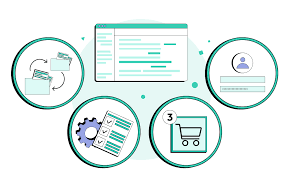Testing techniques have seen a significant shift in the software development sector, with automated functional testing being an essential part of contemporary development procedures. Businesses in a variety of industries are realizing more and more that successful product launches may be distinguished from expensive failures that harm a company’s brand and position in the market by using efficient testing techniques. The crucial factors that businesses need to take into account while developing and putting into practice automated functional testing procedures are examined here.
- Team Skill Assessment and Training Requirements
Implementing automation successfully necessitates a candid assessment of the team’s current skills and the identification of skill shortages that need for specialized training or extra funding. The majority of development teams are highly skilled in manual testing, but they lack the programming abilities, tool knowledge, and automation attitude required to create and maintain test scripts efficiently. For sustained test development, organizations need to spend money on thorough training programs that include automation frameworks, debugging methods, scripting languages, and best practices. The learning curve might be steep, necessitating time set aside for skill development while juggling ongoing projects and testing obligations.
- Return on Investment Analysis and Timeline Planning
Before automated testing may provide quantifiable advantages to the company, a large initial investment in tools, training, and script creation is necessary. Initial expenses consist of infrastructure setup, team training, license fees, and the significant time commitment needed to develop thorough test suites that offer useful coverage. Realistic deadlines that take into consideration the learning curve, stages of script creation, and iterative refinement procedures that define effective automation implementations must be set by organizations. Since stakeholders may anticipate instant returns on their automation investments, the break-even point usually happens months after initial implementation, necessitating patience and ongoing commitment.
- Application Stability and Change Management Impact
Stable application features that hold true over software releases and development cycles are best tested by automated tests. Unstable application components, fluctuating business needs, and often changing user interfaces can lead to maintenance nightmares that utilize more resources than manual testing techniques. Based on characteristics including business criticality, change frequency, and stability patterns, organizations should carefully assess which application areas are appropriate for automation. Test scripts need constant upkeep to account for developing business logic, user interface changes, and application changes, which might make current automation useless without appropriate update protocols.
- Infrastructure Requirements and Environmental Considerations
Reliable infrastructure, such as specialized test environments, enough processing power, and steady network connectivity that facilitates constant test execution, are necessary for robust automated testing. Test environments must replicate production setups while being kept apart from development activities that could introduce factors that compromise test accuracy and reliability. To guarantee that tests run consistently across many environments and time periods, organizations must set up environment management protocols, data refresh methodologies, and configuration control procedures. Servers, networking hardware, monitoring tools, and continuing maintenance expenditures are examples of infrastructure costs that might run above original budget projections.
Conclusion
Businesses must invest in infrastructure, change management, talent development, and sustainable maintenance techniques in addition to producing test scripts if they want automated functional testing to be successful in the long run. Opkey changes the game at this point. With its user-friendly UI, AI-powered capabilities like Impact Analysis and Self-Healing, and smooth CI/CD integration, Opkey, a no-code, AI-powered enterprise testing tool, empowers both technical and non-technical users. Opkey supports more than 150 technologies, assists teams in prioritizing important tests, cutting down on maintenance, and obtaining useful insights through thorough reporting. It enables businesses to expand their automation journey with confidence and deliver software more quickly, intelligently, and dependably.

